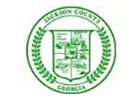Complete Streets Policy
What are Complete Streets?

GHMPO Complete Streets Policy
VISION
Every public right-of-way shall be planned, designed, constructed, and maintained such that all residents within the Gainesville-Hall Metropolitan Planning Organization (GHMPO) planning area have multi-modal transportation options to safely and conveniently travel to and from their destinations.
PRINCIPLES
The following guiding principles should be considered throughout all phases of transportation infrastructure design, construction, and maintenance:
- This policy directs decision makers to consistently design and maintain streets for people of all ages, abilities, income levels, and backgrounds by accommodating all anticipated users including but not limited to cars, bikes, pedestrians, freight and commercial vehicles, and emergency response vehicles where possible and appropriate.
- Each phase in the life of a roadway, including planning, funding, designing, constructing, operating, and maintaining of new and modified streets, will be an opportunity to improve the integration of all transportation modes into the roadway.
- Accommodations for people riding bicycles and for people walking should be integrated into new roadway construction and reconstruction projects in a manner that is appropriate to the context of the planned roadway features, surrounding land use, and desires of the community.
- The design and construction of new facilities should anticipate likely demand for bicycling and pedestrian facilities within the design life of the facility.
- The design of intersections should accommodate people riding bicycles and people walking in a manner that allows for safe crossing.
- Complete Streets principles may not apply to short-term maintenance activities designed to keep assets in serviceable condition (e.g. mowing, sweeping, and spot repair, or interim measures on detour or haul routes). Complete Streets principles do apply to resurfacing activities. Resurfacing efforts should be used, when applicable, as opportunities to create new facilities, such as bike lanes or to improve existing facilities such as reconditioning road shoulders.
- Complete Streets may be achieved through single projects, incrementally through a series of smaller improvements, or through maintenance activities.
- The transportation network should be planned and constructed as a well-connected system that encourages multiple connections to destinations.
- Not all roadways are suitable for complete streets treatment. In corridors whose primary purpose is to carry inter- and intra-regional traffic, for example, a limited range of modal accommodations may be appropriate. At a minimum, sidewalks should be installed unless local conditions dictate otherwise.
- Planned and completed Complete Streets projects ought to be tracked and made publicly available, including exemptions.
- Exemptions to the Complete Streets policy include:
- Cost, Equivalent Facility, Need, Critical Safety Issue, Environmental Impact, Context Sensitivity, & User Restrictions

- The GHMPO will provide technical support to local governments as necessary to assist in developing, implementing and funding complete streets policies, programs and projects.
- The GHMPO shall develop a procedure to provide financial assistance to worthy complete streets projects with an emphasis on funding projects that provide high benefit at low cost.
- Every jurisdiction in the GHMPO planning area is encouraged to adopt a Complete Streets Policy appropriate for its community. In addition, GHMPO will continue to work with all agencies within the planning area to achieve a region wide complete streets vision wherever possible.
- Complete Streets Elements should be considered when local governments develop, modify or update local government comprehensive plans, manuals, rules, regulations and programs, as appropriate.
- American Association of State Highway and Transportation Officials (AASHTO) compliant transportation facilities for all modes, including pedestrian, bicycle, public transit, and motor vehicle, should be provided on all roadways as applicable.
- Local governments are encouraged to apply context sensitive solutions to solve transportation problems in a manner consistent with community characteristics and as desired by local officials, citizens and stakeholders.
- When possible, context sensitive streetscape plans that incorporate appropriate Georgia plants and landscaping materials should be developed whenever a street is newly constructed, reconstructed, or relocated.
- Design standards should include performance measures for tracking the progress of implementing the Complete Streets Policy and detail the procedures for granting exceptions. Performance measures may include, but are not limited to:
- Number of Crashes
- Injuries and Fatalities for all Modes
- Number of Countdown Signals
- Miles of Bike Lanes
- Percentage of Sidewalk Network Completed
- Augmenting non-transportation projects, such as, storm water or private sector development, to concurrently implement complete streets principles should be considered as a cost-effective means to achieve mobility enhancements.
- The GHMPO and local jurisdictions are encouraged to cooperatively implement complete streets concepts on appropriate local roads by, for example, augmenting resurfacing projects or other major construction activity, filling sidewalk gaps, ensuring transit stops on local roads are accessible, resolving potential permitting issues early in the project development process.
- Implementation of the GHMPO Complete Streets Policy will proceed as follows:
- GHMPO staff will make the Complete Streets policy a routine part of everyday operations and shall approach all transportation projects as an opportunity to improve the transportation network for all users of all abilities and will work in coordination with all jurisdictions.
- GHMPO will maintain a priority list of all transportation improvement projects including those for problem intersections and roadways.
- GHMPO will continue to maintain a comprehensive network of bike and pedestrian infrastructure and identify key projects that could help to eliminate any gaps within that network.
- GHMPO will continue to train staff on best Complete Streets principles and practices.
- GHMPO will seek out appropriate funding sources for successful implementation of Complete Streets policies.







